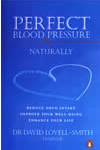Not all chest pain is from the heart,
 and not all pain from the heart is angina.
and not all pain from the heart is angina.
For example, if the pain lasts for less that 30 seconds or if it goes away during a deep breath, after drinking a glass of water, or by changing position, it almost certainly is NOT angina and should not cause concern. But prolonged pain, unrelieved by rest and accompanied by other symptoms may signal a heart attack.
Usually a health professional can diagnose angina by noting the symptoms and how they arise. However one or more diagnostic tests may be needed to exclude angina or to establish the severity of the underlying coronary disease. These include the electrocardiogram (ECG) at rest, the stress test, and x- rays of the coronary arteries (coronary “arteriogram” or “angiogram”).
The ECG records electrical impulses of the heart. These may indicate that the heart muscle is not getting as much oxygen as it needs (“ischemia”); they may also indicate abnormalities in heart rhythm or some of the other possible abnormal features of the heart.
For many patients with angina, the ECG at rest is normal. This is not surprising because the symptoms of angina occur during stress. Therefore, the functioning of the heart may be tested under stress, typically exercise. In the simplest stress test, the ECG is taken before, during, and after exercise to look for stress related abnormalities. Blood pressure is also measured during the stress test and symptoms are noted.
A more complex stress test involves picturing the blood flow pattern in the heart muscle during peak exercise and after rest. A tiny amount of a radioisotope, usually thallium, is injected into a vein at peak exercise and is taken up by normal heart muscle. A radioactivity detector and computer record the pattern of radioactivity distribution to various parts of the heart muscle. Regional differences in radioisotope concentration and in the rates at which the radioisotopes disappear are measures of unequal blood flow due to coronary artery narrowing, or due to failure of uptake in scarred heart muscle.
The most accurate way to assess the presence and severity of coronary disease is a coronary angiogram, an x-ray of the coronary artery. A long thin flexible tube (a “catheter”) is threaded into an artery in the groin or forearm and advanced through the arterial system into one of the two major coronary arteries. A fluid that blocks x-rays (a “contrast medium” or “dye”) is injected. X-rays of its distribution show the coronary arteries and their narrowing.
 Then you need to read this book, by New Zealand author, Dr. David Lovell-Smith.
Then you need to read this book, by New Zealand author, Dr. David Lovell-Smith.
In this book Dr. David Lovell-Smith describes how his patients successfully used diet, lifestyle changes and Transcendental Meditation to bring their blood pressure down.
This book offers new hope and insight for those with high blood pressure but it is not for hypertensives alone. The knowledge which Dr Lovell-Smith presents in his book is timely and relevant, and its exposition is long overdue.
Shop price is $34.95 Our price is $25.00 (including postage – NZ only)
